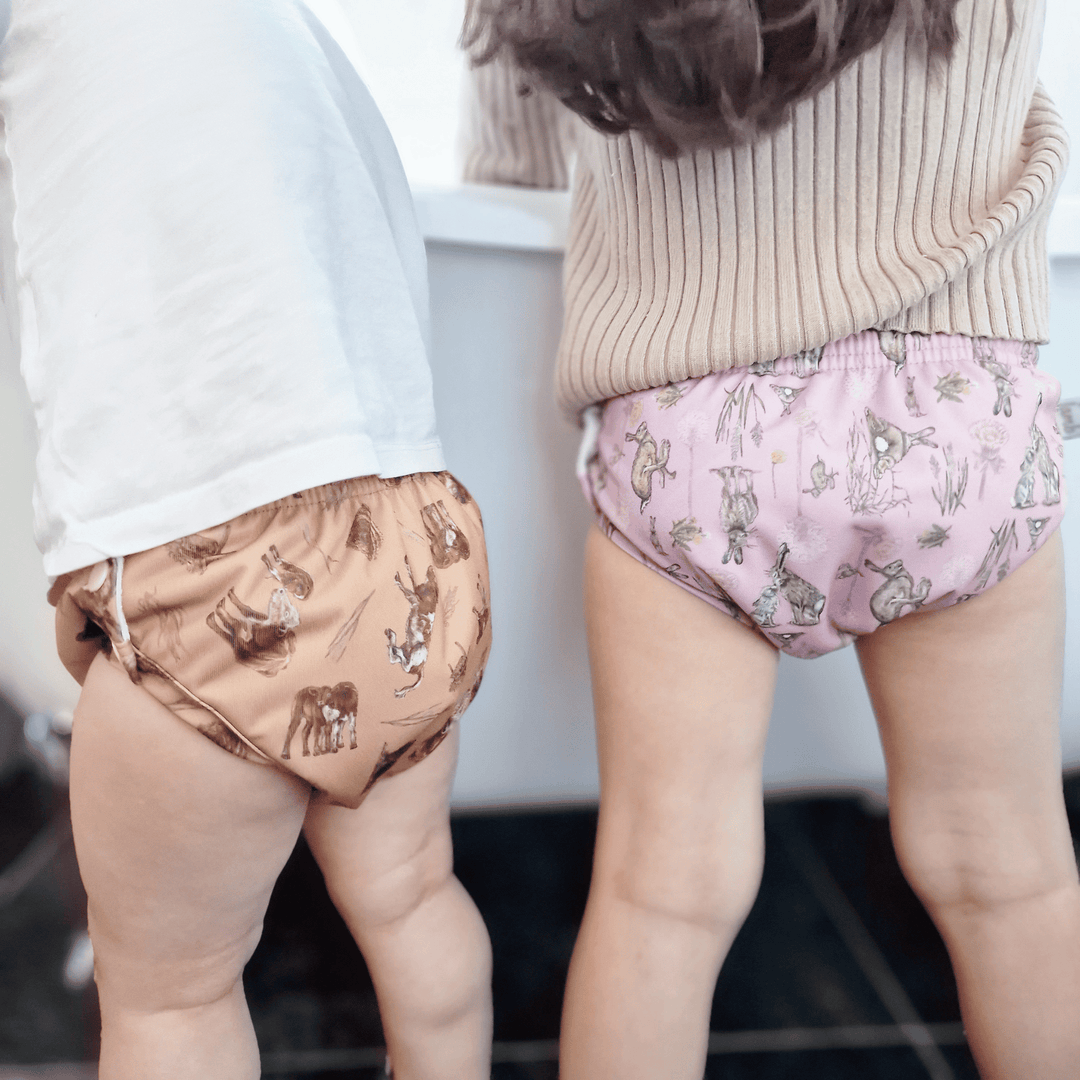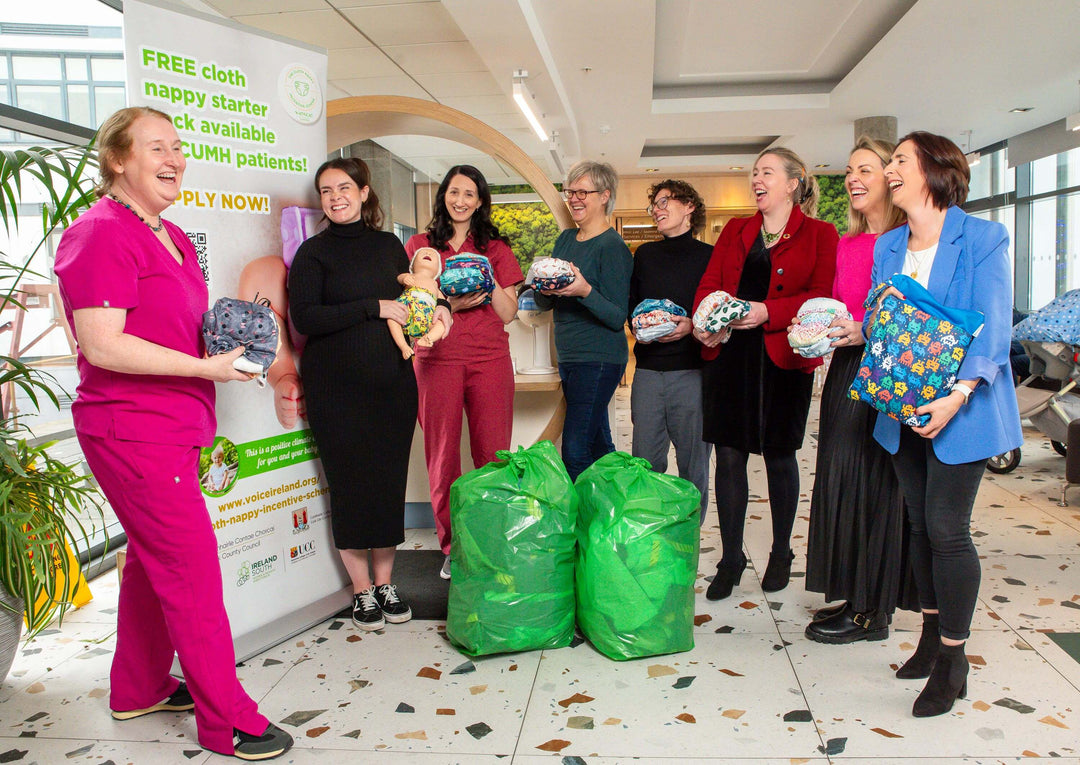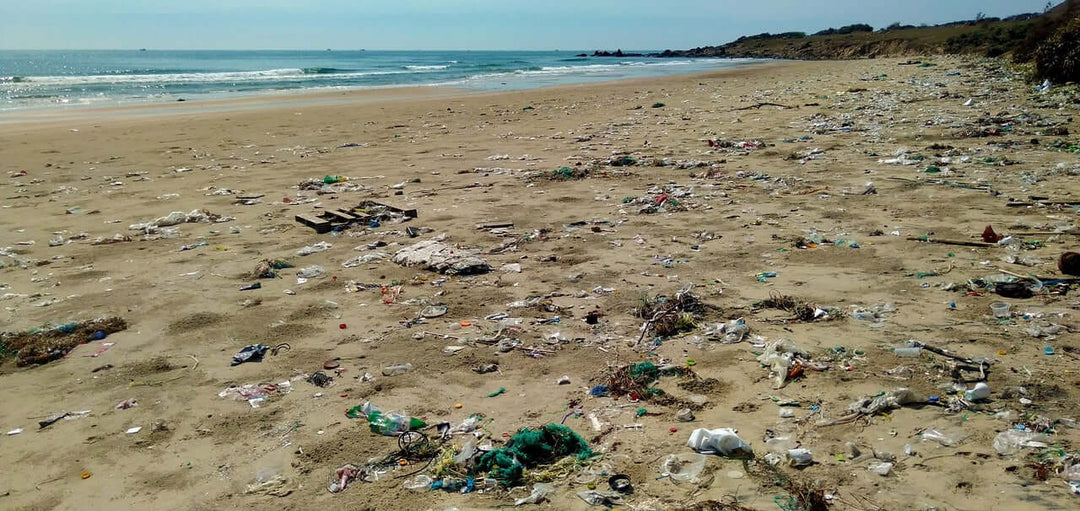5 Tips to Save Time When Using Reusable Nappies
Many parents assume making the switch to using reusable nappies on a full time basis is time consuming, and we're here to show you that it need not be this way, and to provide you some simple tips to save time using reusable nappies. Parents assume they will be faced with bags of full dirty nappies, and a significantly larger laundry load for the washing machine. But with careful planning a routine will quickly become second nature.
1. Use a Pail Liner in a Nappy Bin, Wet Bag, or a Mesh Bag to Store Dirty Nappies
A pail liner is a sturdy, flexible, and inexpensive way to store dirty nappies and inserts. Using a pail liner, a wet bag, or a mesh bag is odour free, thus a superb option in any bathroom or laundry room. Pail liners come in many sizes, but regardless of which brand you choose, they will last you multiple nappy changes, with most easily lasting a a few days. When full, zip or cinch it shut, and when you are ready to wash, simply tip into your washing machine. Cleaning your reusable nappies could not be easier.
There are multiple benefits to using a storage device like a pail liner. You will save money by running fewer wash cycles. When a baby is in nappies for 2.5 to 3 years, this will really add up. You will also save money from lower electricity bills as you aren't running the washer as often. We realise we are probably talking about a few cents here and there, but it absolutely adds up over 2.5 years. Many people disregard the environmental impact of dirty water, and whilst minimal in modern society and carefully designed waste water systems, if we can reduce how often we wash, we should.
When using a pail liner or a large wet bag, bear in mind it can hold about 30 fully stuffed wet and dirty nappies. You should plan to have enough cloth nappies to fill this, and have a few leftover so you can continue using reusables on your baby while they dirty ones are being washed and dried.
A wet bag will essentially do the same job as a pail liner, but a sturdy hard pail or bin is not needed. You can hang your wet bag on the back of a bathroom door or on a hook and simply fill it up until wash day.
A mesh bag may be used much in the same way as a pail liner for washing and drying. You will want a sturdy bin that is leak proof to place the mesh bag in while you store the dirty nappies. A bonus for all 3 of the storage methods mentioned is that they can all be washed alongside your nappies on laundry day!
See our full guide on how to store nappies between washes.
2. Use Simple Reusable Nappies
An all-in-one, or AIO for short, is essentially absorbent materials and waterproof backing sewn into one piece. They are the easiest nappies to use with your baby. They require no folding, no prepping, and no stuffing. An optional stay dry liner can be used for keeping your baby dry so their bum doesn’t directly touch the absorbency of the nappy if it is not a stay dry style all-in-one and adds no time at all to changing. These are the closest in style to a single-use nappy.
See our nappy guide about all-in-one nappies.
A pocket nappy requires an insert or inserts to be placed inside a pocket opening within the nappy to catch and hold wee. It is as simple as placing a letter inside of an envelope. Whilst it is more work than an AIO nappy, it maybe requires an extra 5 seconds each time! Putting an insert inside a pocket nappy is faster than the time it takes to pull a singular disposable nappy from their pack. To save time you can even pre-stuff your pocket nappies after they’ve dried so you can grab and go at each nappy change.
See our nappy guide about pocket nappies.
Nappies come in many forms; there are other types of reusable nappies available, all suitable for a wide range of lifestyles, budgets, and they all work out cheaper than disposables and reduce household waste, but the quickest to use would definitely be all-in-one and pocket nappies.
3. Prepare Your Nappies for Use Before Changing Time
If you choose to use any other type of nappy other than the two styles mentioned above, anything from a flat to a prefold, we advise taking the time to prepare these types of nappies in advance. Whilst they don't take a lot of time to get ready, they can be difficult to grab and prepare them when you have a wriggly baby on your hands during changing time!
Every parent has been there; we are changing a nappy and realise that the wrong type of insert is available or even worse, there's no insert dry and ready. This is frustrating as your baby will be wiggling, and you will have to go and find an insert, prepare the nappy, and hope that you haven’t come back to a big mess.
So save yourself the stress and hassle, because choosing what's best you and saving money should not mean making sacrifices. Save yourself a lot of time and grief by pairing up your nappies in one go before a change.

4. Use Your Time - Multitask!
There are pros and cons to using reusable nappies over disposable ones. If you use cloth nappies you will inevitably have so spend some time preparing them for re-use. If you choose to use reusable nappies full time, with careful planning, you can get all your nappies prepared for a whole week in less than 15 minutes.
We are all busy. We all need and want more time. So let's plan the essentials carefully. Preparing your reusable nappies for the week simply involves your hands and all of the parts of the nappies. It can be done sitting or standing. So watch that TV episode, watch that movie, take that zoom call, listen to your audiobooks or even sit on the floor with your little one and let them help too!
5. Stick to a Routine
Using reusable nappies should not be a burden. It should not be stressful. Many of our customers have told us they have figured out a routine within 2 weeks of starting reusable nappies with their little one. A little bit of planning is all it takes.
Some customers have even told us using reusable nappies actually saves them time compared to when they used disposable nappies as they adopt and stick to a routine and it just becomes second nature.
The three main elements are washing, drying, and preparing.
Washing your nappies is incredibly straightforward, but how often you do it depends on how you store them. Drying your nappies is the most time consuming, but nearly all manufacturers encourage that a tumble dryer can be used on a low setting if necessary. Save even more money by line drying them, but let's not kid ourselves...this is Ireland! We may need that dryer.
And Finally...
The benefits for you, your baby, your budget, and the environment are indisputable, and we hope these simple tips will remove any stress that any additional workload entails. Reusable nappies can be, and should be, stress free. If you have any other questions about switching from disposables to reusables, what washing powder to use or which laundry setting it best, using different styles such as a nappy cover vs a pocket nappy, different absorbency options such as bamboo vs hemp vs microfibre, let us know. You can contact us here.




